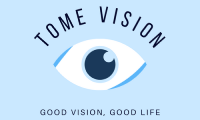How Vision Works: The Journey from Light to Sight
Introduction:
Vision is one of our most vital senses, allowing us to perceive and interact with the world around us. Have you ever wondered how this remarkable process takes place? From the moment light enters our eyes to the formation of a clear and detailed image in our brains, let’s explore the journey from light to sight.
I. The Anatomy of the Eye:
To understand how vision works, it is essential to familiarize ourselves with the intricate structures of the eye. The eye’s main components include the cornea, iris, lens, retina, and optic nerve, each playing a critical role in the visual process.
– The cornea acts as a protective outer layer, bending incoming light and helping focus it onto the retina.
– Behind the cornea lies the iris, a circular muscle responsible for controlling the size of the pupil, which regulates the amount of light entering the eye.
– The lens, situated behind the iris, further focuses the incoming light onto the retina, allowing for clear vision.
– The retina, located at the back of the eye, contains millions of light-sensitive cells called rods and cones that convert light into electrical signals.
– The optic nerve carries these electrical signals from the retina to the brain, where they are processed and interpreted.
II. The Visual Process:
Now that we understand the basic anatomy, let’s delve into the visual process itself, which begins as soon as light enters our eyes.
– Light first enters the eye through the cornea, which refracts or bends the light.
– Through the opening of the pupil, controlled by the iris, the light passes to the lens.
– The lens adjusts its shape to focus the incoming light onto the retina.
– When the light reaches the retina, it interacts with the rods and cones.
– The rods, sensitive to low light levels, provide black-and-white vision and peripheral vision.
– The cones, responsible for color vision, work best in bright light and enable us to perceive fine details.
– When light strikes the rods and cones, they convert it into electrical signals, which are transmitted to the brain through the optic nerve.
– Once reaching the brain, these electrical signals are interpreted by the visual cortex into the images we see.
Conclusion:
Understanding how vision works highlights the complexity and elegance of the visual process. From the initial refraction of light in the cornea to the interpretation of electrical signals by the brain, each step is essential for our ability to see the world around us.
By appreciating the structures within the eye and the interplay of light and cells in the retina, we develop a deeper understanding of the importance of eye health. Regular eye examinations, maintaining a balanced diet, protecting our eyes from harmful UV rays, and avoiding excessive strain on our eyes by taking breaks from screens are all crucial to maintaining optimal vision.
Never take your sight for granted. Take care of your eyes, and they will continue to allow you to explore the beauty of the world.
